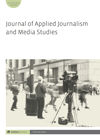
Full text loading...
This study seeks to uncover the effects of source and repetition on the illusory truth effect and the dissemination of fake news on social media with an online experiment. This study found that in a personalized source system where trustworthy traditional news sources and personal contacts converged on social media, repetition has a big influence on the trustworthiness of news source and balance of news story. Although most people intend to share real news stories with balance, the illusory truth effect causes mis-judgement, which makes fake news more likely to go viral than real news. The multi-group SEM analysis of the two groups – without source and with source – showed that readers in the no source group rated the effect of repetition on news evaluation as more significant than the with source group. The findings suggest that the effect of source has diminished in the evaluation of news quality. However, sharers on social media are becoming more influential.

Article metrics loading...

Full text loading...
References


Data & Media loading...

Publication Date:
https://doi.org/10.1386/ajms_00042_1 Published content will be available immediately after check-out or when it is released in case of a pre-order. Please make sure to be logged in to see all available purchase options.